Kentucky Hospital Utilization
April 2024
There is a national narrative that hospital and health system patient volumes have seen large increases and now exceed pre-pandemic levels. While this is not true in Kentucky, other emerging trends are straining the capacity of hospital services. Hospitals provide an array of services, treating patients in a wide range of settings and for many disparate clinical conditions.
In Kentucky, inpatient utilization has declined for several years, and compared to 2017, the number of discharges decreased by 9.6 percent, from 605,057 to 546,734 by the end of the 2023 calendar year. Figure 1 shows the number of inpatient discharges.
Discharges
decreased by
9.6%
from 605,057 to
540,664 by the
end of 2023
Figure 1. Inpatient Hospital Discharges
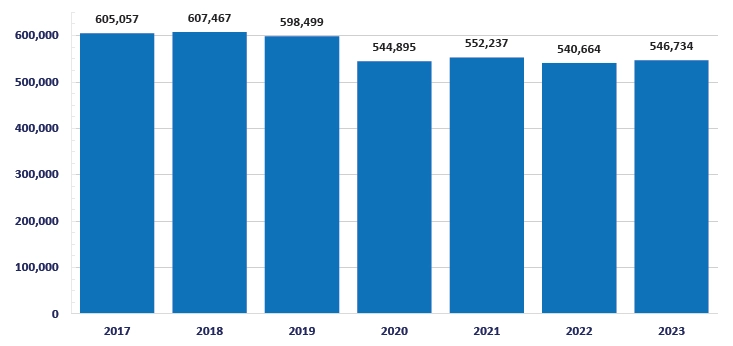
In contrast, outpatient visits have increased over the last four years by approximately 16.4 percent, from about 10.0 million in 2019 to 11.7 million in 2023. It is noteworthy that this increase occurred exclusively in the non-profit sector, while for-profit outpatient facilities experienced an overall decline in outpatient visits, from 888,831 in 2019 to 892,534 in 2023 (-0.3 percent). The total number of outpatient visits has exceeded 11 million three years in a row and is likely to continue this trend.
Figure 2. Outpatient Hospital Visits
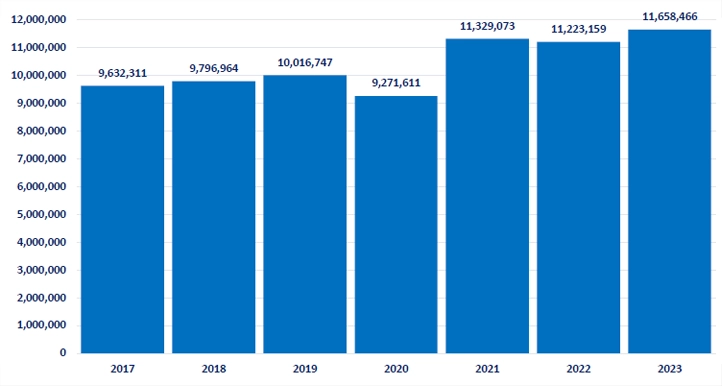
Total number of
outpatient visits
exceeded
11 million
three years in a
row and is likely
to continue this
trend
Emergency room (ER) utilization is alternatively coded as either inpatient or outpatient and, therefore, included in the discharges (inpatient) and visits (outpatient) above. ER utilization remains below pre-pandemic levels but has increased every year since the abrupt decline at the onset of the COVID-19 pandemic in 2020 (See Figure 3).
Figure 3. Emergency Room Visits
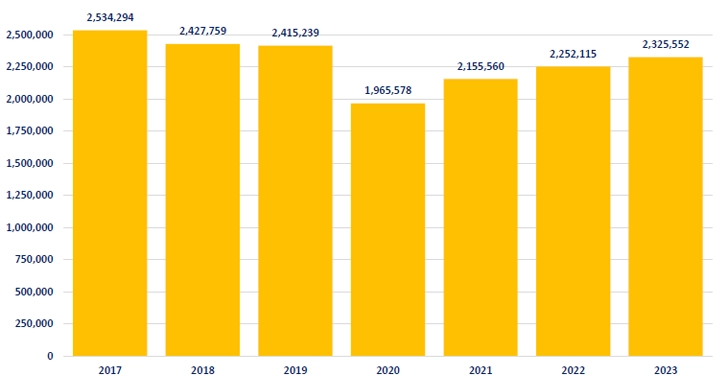
The shift in volume from inpatient to outpatient care is accompanied by a dramatic increase in the average length of stay (ALOS) for inpatient discharges. Over the last seven years, going back to 2017, well before the pandemic, the ALOS has increased every year, except in 2019, and is 16.7 percent higher in 2022, adding nearly an entire day of patient care to the average inpatient hospitalization (see Figure 4). While there was a small reduction in the ALOS for 2023, the rate remains well above the pre-pandemic ALOS.
Figure 4. Inpatient Average Length of Stay (ALOS)
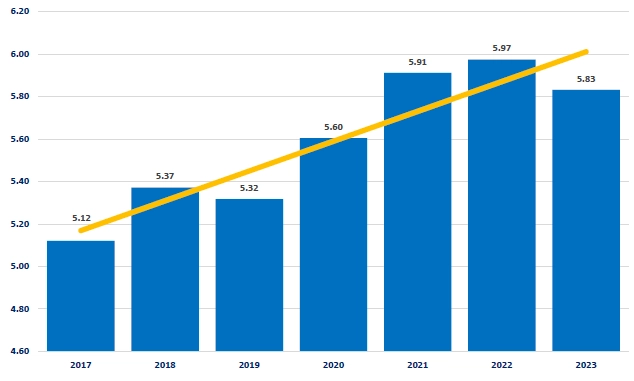
More complex inpatient cases caused average length of stay to increase
by nearly an entire day
The number of inpatient medical cases exceeds the number of surgical cases, but while the number of surgical cases remains relatively unchanged, most recently, approximately 155,000 per year, the number of medical cases dropped from a high of 457,061 in 2017 to 390,792 in 2023, the most recent year with complete data, a decrease of 14.5 percent (Figure 5).
However, as noted in Figure 4, ALOS increased overall. Still, while surgical cases previously were of longer or the same duration as medical cases, medical cases are now more complex than ever before and require more inpatient days (See Figure 6).
Figure 5. Inpatient Medical & Surgical Discharges
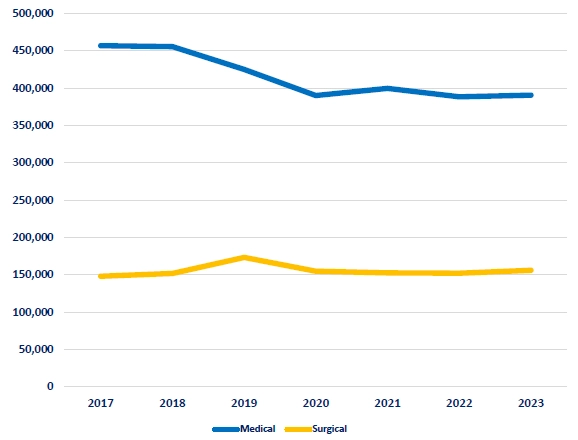
Medical cases are now more complex than ever before and require more inpatient days
Figure 6. Inpatient Medical & Surgical ALOS
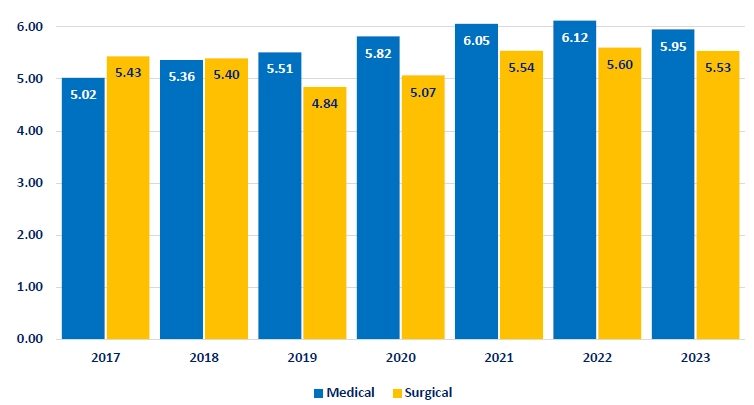
- The number of inpatient discharges declined, but the length of stay remains higher and each case consumes more resources, adding nearly an additional day of patient care since 2017.
- The average length of stay for non-surgical (medical) cases exceeds that of surgical cases by 7.5 percent in 2023. In contrast, the volume and duration of surgical cases have remained largely unchanged since 2017.
Questions?
Maik Schutze
Director, Health Information & Analytics
Kentucky Hospital Association
502-992-4316


